This is a preprint.
A high-resolution transcriptomic and spatial atlas of cell types in the whole mouse brain
- PMID: 37034735
- PMCID: PMC10081189
- DOI: 10.1101/2023.03.06.531121
A high-resolution transcriptomic and spatial atlas of cell types in the whole mouse brain
Update in
-
A high-resolution transcriptomic and spatial atlas of cell types in the whole mouse brain.Nature. 2023 Dec;624(7991):317-332. doi: 10.1038/s41586-023-06812-z. Epub 2023 Dec 13. Nature. 2023. PMID: 38092916 Free PMC article.
Abstract
The mammalian brain is composed of millions to billions of cells that are organized into numerous cell types with specific spatial distribution patterns and structural and functional properties. An essential step towards understanding brain function is to obtain a parts list, i.e., a catalog of cell types, of the brain. Here, we report a comprehensive and high-resolution transcriptomic and spatial cell type atlas for the whole adult mouse brain. The cell type atlas was created based on the combination of two single-cell-level, whole-brain-scale datasets: a single-cell RNA-sequencing (scRNA-seq) dataset of ~7 million cells profiled, and a spatially resolved transcriptomic dataset of ~4.3 million cells using MERFISH. The atlas is hierarchically organized into five nested levels of classification: 7 divisions, 32 classes, 306 subclasses, 1,045 supertypes and 5,200 clusters. We systematically analyzed the neuronal, non-neuronal, and immature neuronal cell types across the brain and identified a high degree of correspondence between transcriptomic identity and spatial specificity for each cell type. The results reveal unique features of cell type organization in different brain regions, in particular, a dichotomy between the dorsal and ventral parts of the brain: the dorsal part contains relatively fewer yet highly divergent neuronal types, whereas the ventral part contains more numerous neuronal types that are more closely related to each other. We also systematically characterized cell-type specific expression of neurotransmitters, neuropeptides, and transcription factors. The study uncovered extraordinary diversity and heterogeneity in neurotransmitter and neuropeptide expression and co-expression patterns in different cell types across the brain, suggesting they mediate a myriad of modes of intercellular communications. Finally, we found that transcription factors are major determinants of cell type classification in the adult mouse brain and identified a combinatorial transcription factor code that defines cell types across all parts of the brain. The whole-mouse-brain transcriptomic and spatial cell type atlas establishes a benchmark reference atlas and a foundational resource for deep and integrative investigations of cell type and circuit function, development, and evolution of the mammalian brain.
Conflict of interest statement
Competing Interests X.Z. is a co-founder and consultant of Vizgen.
Figures




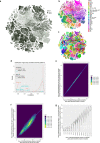



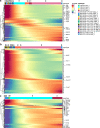
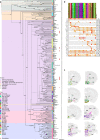





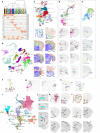
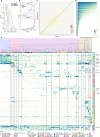
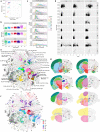
References
Publication types
Grants and funding
LinkOut - more resources
Full Text Sources
